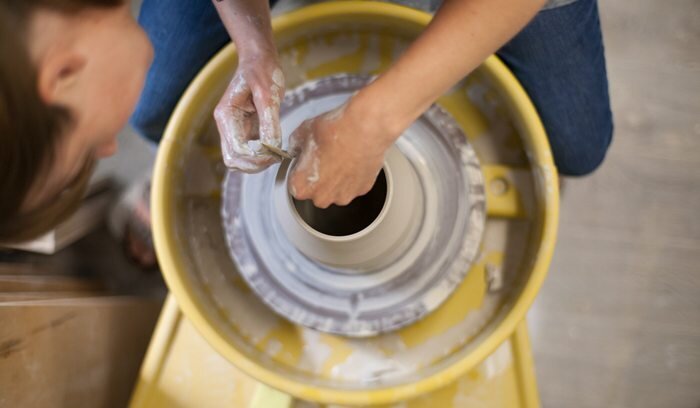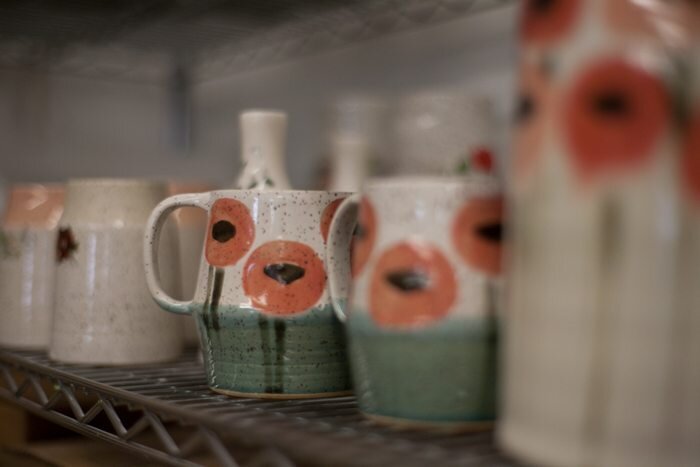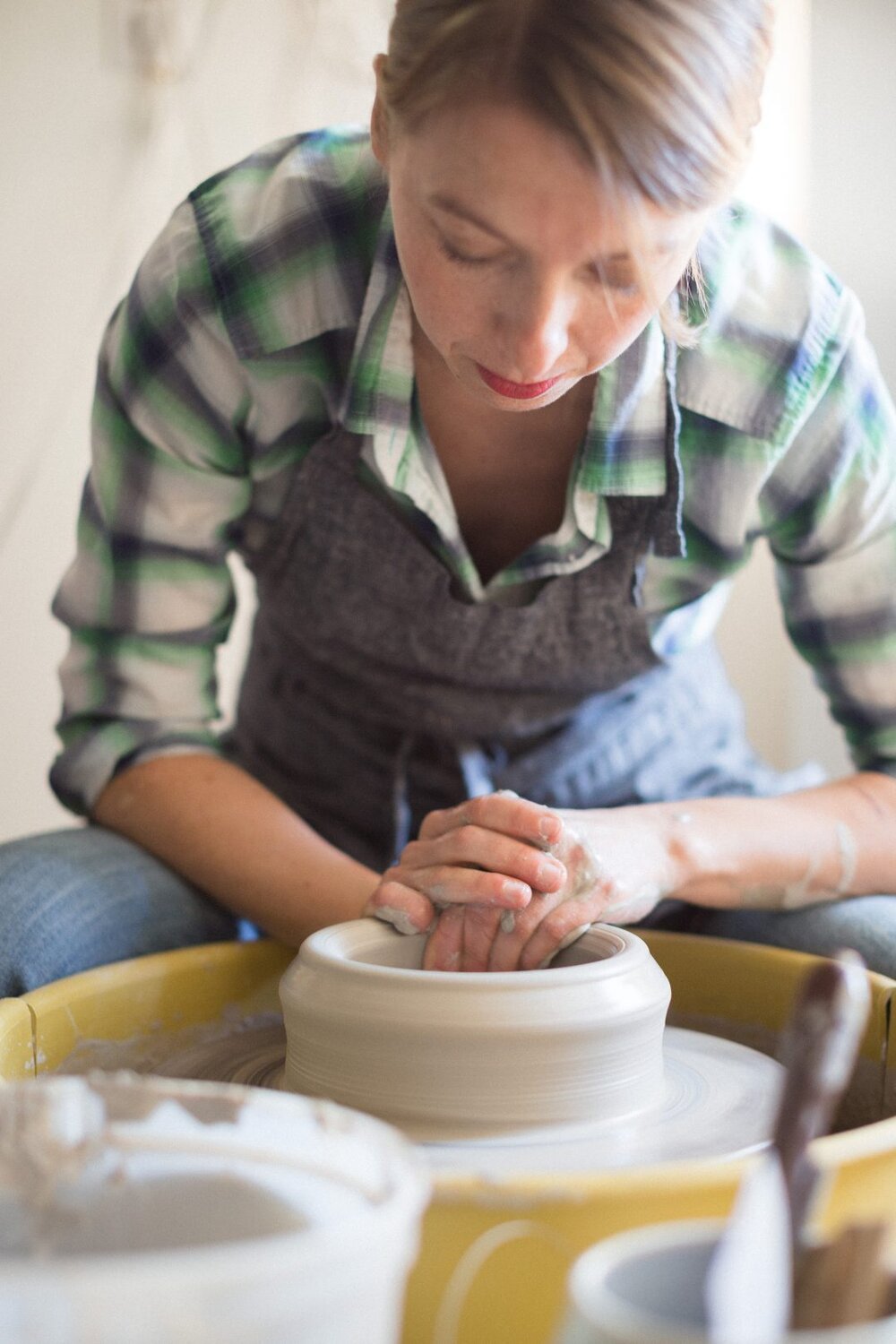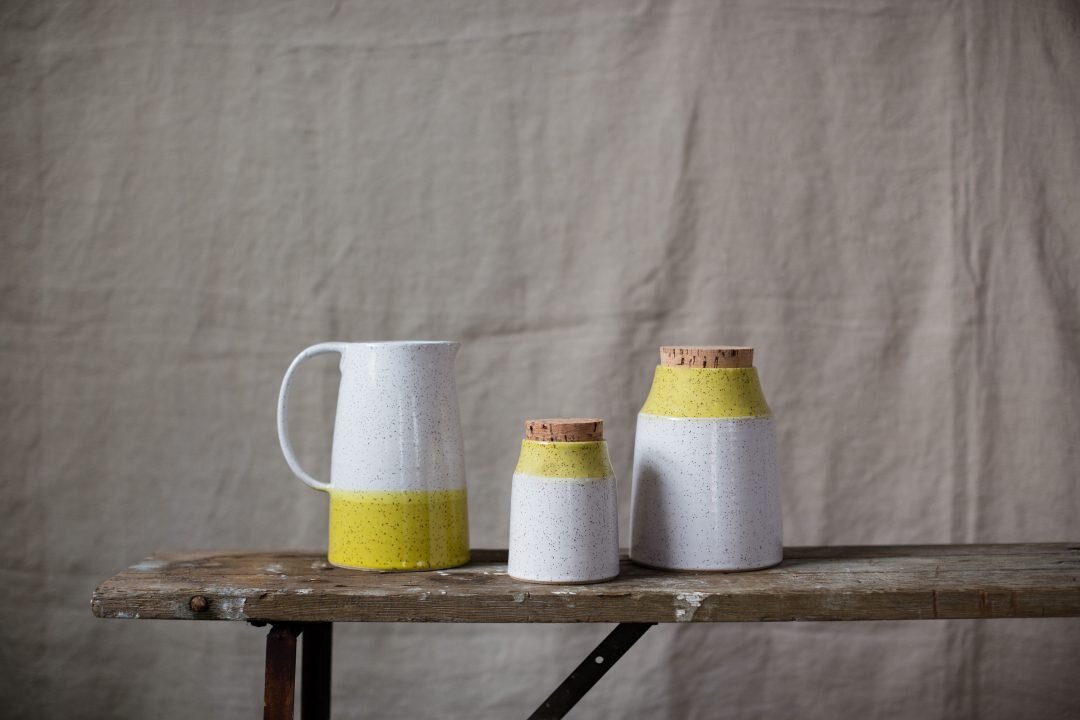Heather Dahl: Ceramic Artist and Painter - True Calling
What does it mean to make something that you want to bring into your home and use everyday? Is there a connection between the work and someone’s real life? These are just some of the questions ceramic artist and painter Heather Dahl asked herself when she was in the early years of her art practice. Despite being told by art school instructors that she couldn’t have a family and do ceramics at the same time, Dahl pursued her craft further at a community centre pottery studio while caring for her toddler and baby.
Today, Dahl can be found at dahlhaus, where she has created work for Nordstrom, West Elm, and Anthropologie, and continues to make ceramics for over 20 stores and independent retailers each year. Her work has been featured in magazines such as Bon Appetit, InStyle, Style at Home, and Canadian House & Home. Most importantly, Dahl is proud to be mom to two growing boys, part of a thriving ceramic cooperative, and playing a role in a community of artists, makers, and people who are passionate about handwork.
In Dahl’s successful career, there seems to be no unlocked secrets; just hard work. As she explores creating a new line of pendant lamps, Dahl sat with us to talk about how she started her business, the worst part about owning one, and the best advice she has ever received.
Where did you go to school and what did you study?
After graduation I went to a community college that’s now the University College of the Fraser Valley and started a fine art diploma program there for two years. I transferred over to Emily Carr and finished my Bachelor of Fine Arts with a major in ceramics and painting.
What was your first job after school and how did you get it?
My first job was at a group home for adults with mental and physical disabilities and I worked for an organisation that provided housing for adults and day programs. It was at a time when I didn’t need a diploma to work there. That was actually the job that took me through my entire schooling and at one point I managed the group home in between when I was going to the college and Emily Carr. I thought about doing that job as a career and I came back to it after I graduated. But I had gone to school to be an artist and I wanted to figure out a way to make that happen for myself.
That kind of experience when you’re young can open your eyes to many things. What were you able to apply to your career?
The people that I worked with had a joy for life they took every day as it came. What it gave me was a lot of confidence to be myself, to understand who I was, to understand my faults, and to be ok with them. When it came to starting my own studio practice and business, I right away realised, well, I’m not good at graphic design, and I’m not good at photography, and I’m not good at mold-making. And so the willingness to collaborate right off the bat and understand what my strengths and weaknesses were was there. I was probably more aware of them because I had been in a situation where you just love and accept people for who they are, you embrace them, and you embrace life regardless. That was my takeaway.
Did your upbringing or childhood influence your work in any way?
My mom was a pianist and a piano teacher and so I took violin really early on and violin is one of those instruments where you have to really work. Really hard. It’s not an easy instrument to learn. I took violin throughout my high school years and the year after I graduated, I took a big grade 10 violin exam and I was probably practising at least four hours a day for it. So I think the idea that you had to work hard is ingrained in me. My work ethic is pretty high, and I’ll get studio assistants in the studio and I’ll be like, you gotta do the work. None of this fake it till you make it stuff. You’ve got to actually make the pots, you’ve got to do a lot of hard work.
What made you choose ceramics?
Working with my hands and probably practising all those scales made my hands really strong. I sat down at the wheel, and it didn’t take me very long to learn how to throw. It came pretty naturally to me and then I think the other thing I really liked was just the practical side of it. I could make a mug for a gift, there was something lovely about the idea that I could make something to be used. I think there was something immediately satisfying about that for me.
What was your first challenge when you finished school?
A lot of the instructors that I had at Emily Carr and in college had never ever made a living from their work. They had gone straight from undergrad to grad school. And certainly they’ve had shows, and certainly, their work was highly valued, but they’d never actually had to figure out what it does mean to actually make a living from your work. And is that even possible? And here you’re teaching students, with the idea that they can make a living, from their work, when you actually have no practical experience doing that. So I got out of art school and it was like, Oh, how does this work? What do I do now? And there was probably a good three years where I just couldn’t quite figure out like, how do you actually make the volume of work you need to make for that value point to be able to make a living. Is that humanly possible? And what would it take and where would I need to do that? So there was a lot of figuring out of how that would actually work.
“YOU GOTTA DO THE WORK. NONE OF THIS FAKE IT TILL YOU MAKE IT STUFF. YOU’VE GOT TO ACTUALLY MAKE THE POTS, YOU’VE GOT TO DO A LOT OF HARD WORK.”
How did you start your business?
I took a self-employment program in 2007 which was a big catalyst for me to think about the numbers of how much work I’d have to make, who was my market, where I was going to sell the work. It was a self-employment program you can apply to through the government and at the time, they gave me about $300 a week to be in it. There were two months of startup business classes and then I had a business mentor for a year, and that kind of was my permission slip to do this. I had two small kids at the time, we were renting, I had been working part-time, and I didn’t have any savings to kickstart my business.
I was living in North Van and there was this cute little shop there called Room 6. I approached the woman who owned it and said, this is the work I’ve been making at the pottery studio up the road at the community centre, and I’d love to have a little show, would you be into that? We could do something in November, and she said yeah, I’d love that. She’s still in business, and she still carries my work. It was two big things that kind of gave me permission to start.
What was that moment when you knew your business was starting to take off?
Probably when I did the poppy pattern. It’s the pattern that I’m still making. Two years into my business, in 2009, I had a little studio sale, I had some friends come by and I sold the pieces all within the first hour. People were like, you have to make more of these. I did Portobello West back in the day, and brought that pattern there and sold out of it right away, and I was like, huh! Then 2010 was the year that the Olympics happened and Crafthouse Gallery put in a gallery at the airport. They started wholesaling that work and ordering monthly. I have to bring work there again later today—I’m like, I can’t believe you guys are still ordering the same thing you did in 2010!
What’s an average work day like for you?
I’m usually here by 9:00 a.m. and I have orders that are always in my inbox from stores, so I know exactly what I’m making when I get to the studio if I’m working on wholesale work. So I have a list and I’m like ok, I gotta make 60 mugs today. I wedge them all up, sit down and I make 60 mugs or whatever it is. It’s not just that I make them start to finish; I’ll throw the vessels for 60 mugs and then two days later I’ll trim them and put the handles on, then four days later I’ll fire them. It takes two to three weeks so there’s always things to be done. If you’ve just thrown something you need to cover it and make sure it doesn’t dry out too quick, there’s always things. Ceramics is like a third child, you always need to be taking care of it.
“THE BUCK STOPS WITH YOU, IT BEGINS AND ENDS WITH YOU. YOU’RE THE ONLY PERSON THAT CAN MOTIVATE YOURSELF TO GET IN THERE AND DO THE WORK AND MAKE IT ALL HAPPEN.”
What has been your greatest achievement?
There are big highlights, for sure, in my career. The day that the Anthropologie buyers came to my studio with me not knowing that they were coming in, six of them walked in and they were beautifully dressed. They told me, we’re opening an Anthropologie in Vancouver, and I was like, you work for Anthropologie? Oh wow. It was one of those lightning bolts: oh my goodness, how did they find me, little me, in my little studio in Vancouver, making little pots, like how does this happen? Those are kind of big moments.
What’s the worst part about having your own business?
The worst is that the buck stops with you, it begins and ends with you. You’re the only person that can motivate yourself to get in there and do the work and make it all happen. So if you break your arm, or you’re tired, or you get the flu—whatever happens, life happens, it begins and ends with you.
What is the best part?
The best part is that you get to make those decisions. What jobs you want to take, and what you think will work for you. If the risk is manageable then I think it’s the best thing ever because you’re the one that gets to call the shots.
If you weren’t doing this what would you be doing?
Probably teaching.
What’s the best advice you’ve ever received?
I got early advice to have great photos of my work, to take great photos of my work. That was probably my best advice. I haven’t always done that, there were times when I kind of cheaped out a little bit and just needed the photos and not necessarily paid the right person for that job. But I do think photography has been huge.
What breakfast kickstarts your day?
A smoothie.
What do you listen to when you’re working?
CBC Radio 2. I don’t have a clock on the wall because I don’t like to look at it all the time to know what time it is. I would rather intuitively know what time it is. And because of my classical music background, it kind of feeds that part of me to just have CBC playing. It’s good throwing music.
What’s your favourite after-work drink?
A beer!
What do you like to cook for dinner?
My kids like to say I’m salad-obsessed. I like one-pot, everything goes in the pot kind of meals. I cook everything from scratch so I like to throw in veggies that my kids don’t see. My younger one is great with salads and greens, eats really healthy and is really conscious, and my older one is like, “Why don’t you deep-fry?”
What would your 16-year old self think of you now?
Oh, it would be the best thing, ever. I moved to Yarrow when I was 14 from Winnipeg and in Winnipeg obviously I’m a kid in the city and I’m hopping on the bus and going downtown and going shopping, and then all of a sudden I get transplanted into this little tiny town where there’s no buses and the only shopping is to go to the pottery studios. And I literally fell in love with their studios—an old barn, and the smell in there, the clay, the kilns, and CBC in the background— I always thought it was so great.
Do you love what you do?
I do.
By Ianne Sy. This interview has been edited for length and clarity. Photos courtesy of Heather Dahl.
Watch all of our stories and stay up to date on new True Calling episodes by subscribing to our Youtube Channel.







